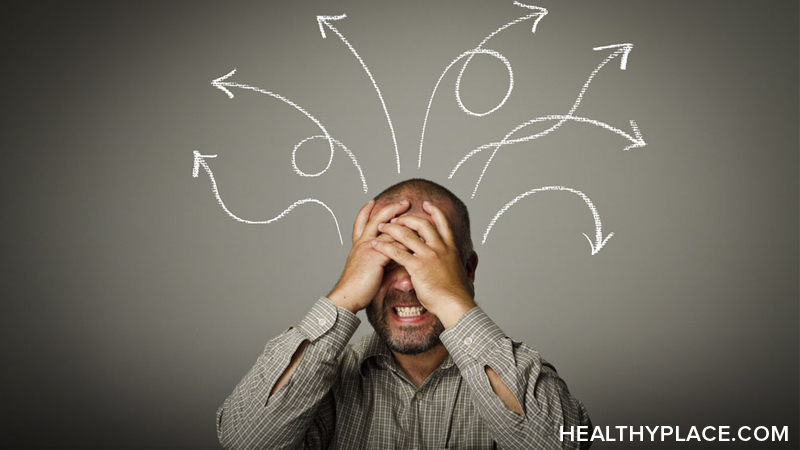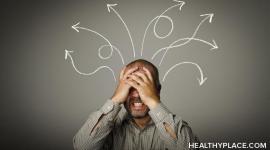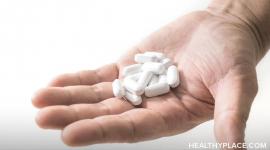Panic Disorder Symptoms: The Signs of Panic Disorder

Symptoms of panic disorder can be extremely crippling and eventually lead to agoraphobia and a state in which the person refuses to leave their house. Panic disorder also puts a person at much greater risk of a suicide attempt. 10% - 20% of patients with panic disorder have had a suicide attempt.
Interestingly, about 1.5% - 5% of people will experience panic disorder symptoms in their lifetime. Women are two-to-three times more likely to experience panic disorder than men. Panic disorder symptoms usually manifest in a person's 30s.
A panic attack is one of the key signs of panic disorder. Panic attacks can be very severe and often convince a person they are having a heart attack or are dying. (Read about confusing panic attacks and heart attacks.) The strong, physical panic disorder symptoms are very real and get out of control quickly. And worse, a person having a panic attack often feels the need to flee but cannot due to the situation. The terror of possibly experiencing another panic attack in the future can bring about so much anxiety, it can actually cause future panic attacks.
Symptoms of Panic Disorder
Severe anxiety and panic disorder symptoms can be similar, but are distinctly defined in the Diagnostic and Statistical Manual of Mental Disorders (DSM-IV-TR). Symptoms of panic disorder include the presence of panic attacks, as well as additional symptoms of worry and anxiety. (Concerned you may have panic disorder. Take our panic disorder test.)
Panic attacks are periods of intense fear which peak in about ten minutes and are not related to another mental illness or substance use. A person must have four or more of the following symptoms to be diagnosed with a panic attack:
- Sweating
- Trembling or shaking
- Palpitations, pounding heart, or accelerated heart rate
- Chest pain or discomfort
- Sense of shortness of breath or smothering
- Feeling of choking
- Nausea or abdominal distress
- Feeling dizzy, unsteady, lightheaded, or faint
- Derealization or depersonalization (feeling detached from oneself or the world)
- Fear of losing control or going crazy
- Fear of dying
- Numbness or tingling sensations
- Chills or hot flashes
The symptoms of panic disorder include the presence of panic attacks, as well as one of these additional symptoms for more than one month:
- Constant worry of having another panic attack
- Constant worry of the consequences of having a panic attack
- Significant changes in behavior due to the panic attack
Learn more about how to stop panic attacks and panic attack treatment.
Signs of Panic Disorder
In addition to the diagnostic symptoms of panic disorder, there are also more general signs of panic disorder. During a panic attack, for example, additional signs include:
- A desire to flee or escape
- A feeling of doom or a feeling of dying
More signs and symptoms of panic disorder include:1
- Headache
- Cold hands, chills
- Diarrhea
- Insomnia
- Fatigue
- Intrusive thoughts
- Tightness in the throat, trouble swallowing
- Hyperventilation
Panic disorder also often occurs with other anxiety disorders as well as other illnesses. Because of the common co-occurrence, it's wise to look for the signs of panic disorder if a person has:
- Abdominal problems
- A pulmonary or heart disorder
- Chronic or severe headaches
- Restless leg syndrome
- Unexplained fatigue
- Obsessive-compulsive disorder
- Specific / social phobia
Information on panic disorder treatment here.
APA Reference
Tracy, N.
(2012, January 17). Panic Disorder Symptoms: The Signs of Panic Disorder, HealthyPlace. Retrieved
on 2025, December 7 from https://www.healthyplace.com/anxiety-panic/panic-disorder/panic-disorder-symptoms-the-signs-of-panic-disorder


